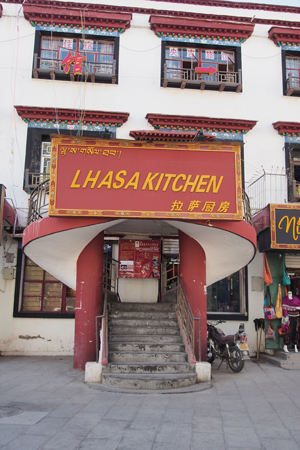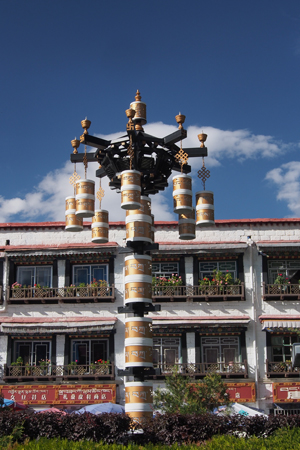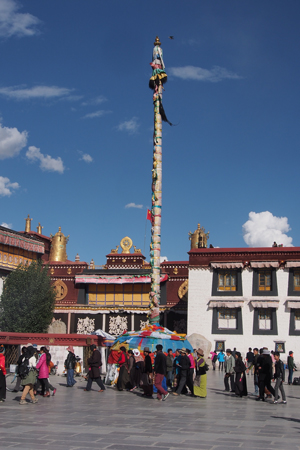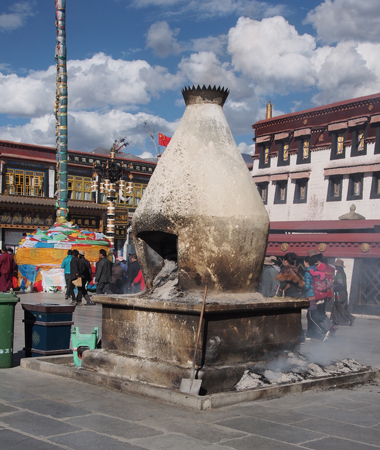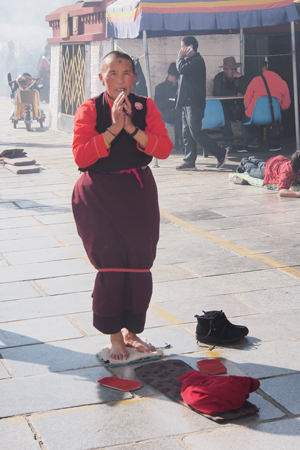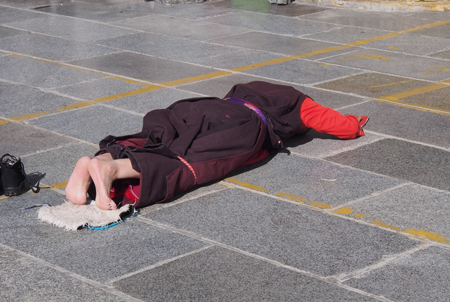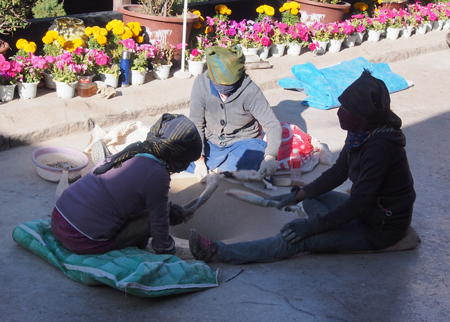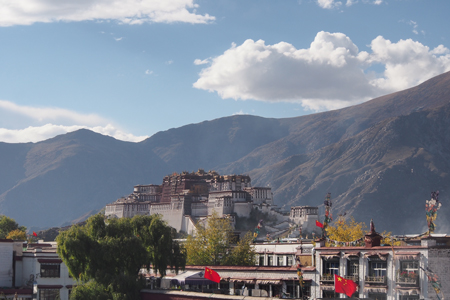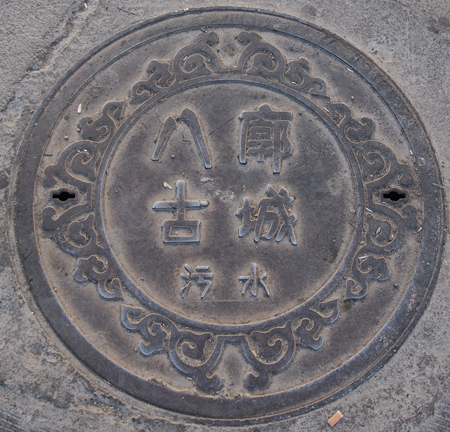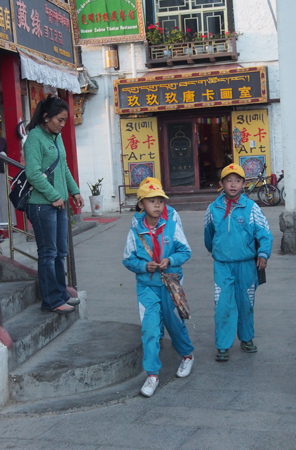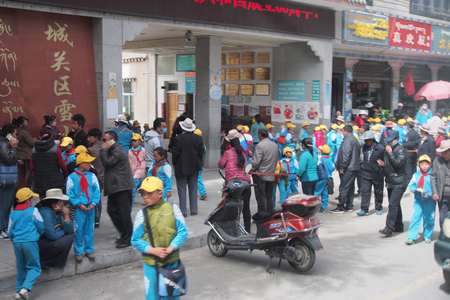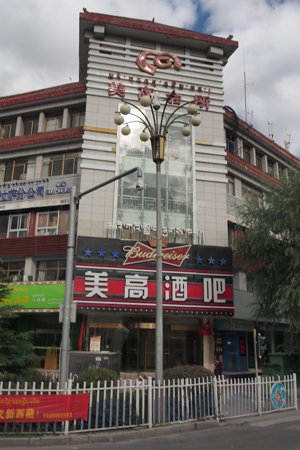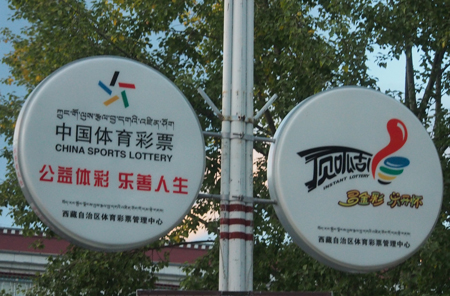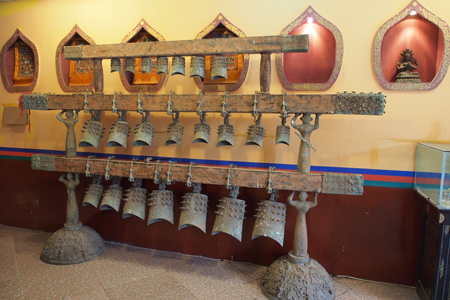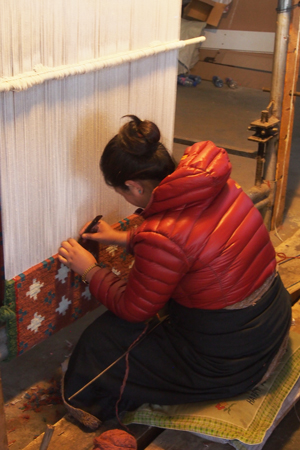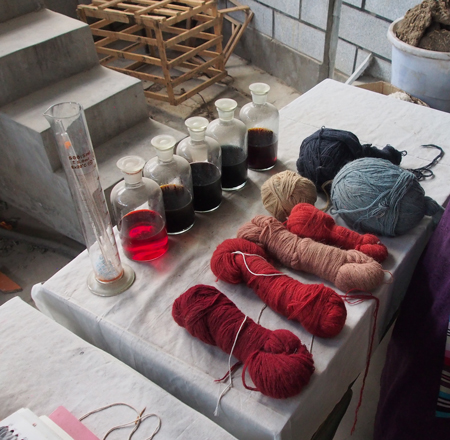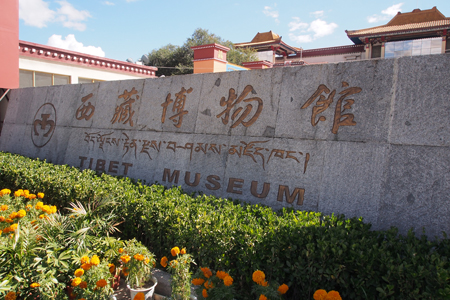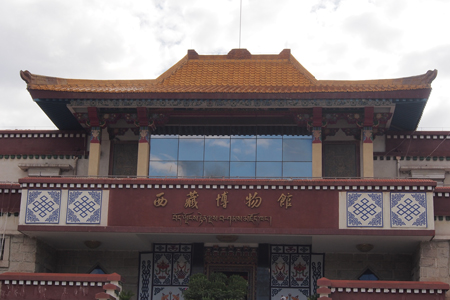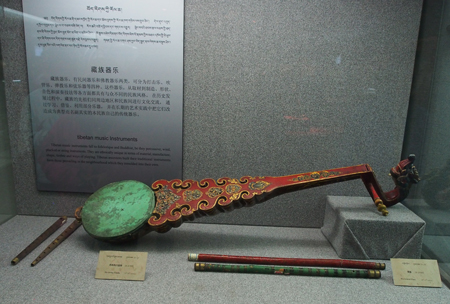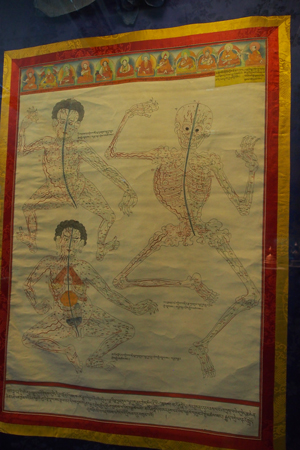We had two hours to rest at the hotel before we went to tour the Jokhang Temple. We again had to go through security screening to enter the square. The temple is one of the oldest (647 CE) and holiest temples among Buddhists. Because today was a Buddhist festival day, some of the 120 yellow-clad monks who live at Jokhang were chanting in one of the large reception rooms, pilgrims were giving them offerings, and some monks were repainting the unclothed Sakyamuni Buddha with gold paint. Outside of the temple are huge prayer poles covered with prayer flags and two large incense burners. Because of the festival day there were many people prostrating themselves in front of the temple. They will stand, kneel, and lie flat 1 or 2 thousand times! Other people were walking around the temple with beads and spinners. They walk the circuit at least 3 times.
The smell of incense was so strong we were happy to go to the roof and look down at the religious walking three times clockwise around the temple. Most of them had prayer beads and prayer wheels. We also had a view of the Potala Palace from the rooftop.
| Return to Top | Return to Itinerary | Return to Trips page to view other trips | Return to Dreamcatcher Home Page |

